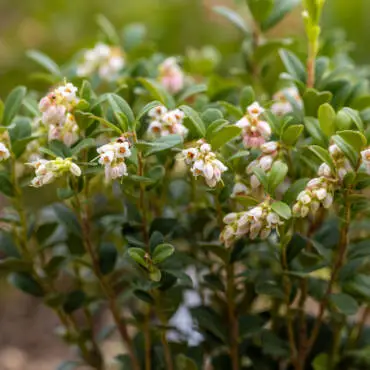“The greatest wealth is health.” Virgil
Mind, Body & Spirit


Wellness Starts Here
Vibrant, vital, happy and healthy – this is the ideal state of life that virtually everyone wants to achieve, regardless of age. It’s doable, but the secret isn’t a cosmetic quick-fix. Rather, the best way to stay physically strong, healthy and full of optimism with each passing year is a daily investment in exercise that works with your body’s biological changes.
Food can make you healthier too-- if you make good choices. It can seem hard to make healthy food choices, particularly if you are on a budget and short on time. But there are some simple steps you can take to help you and your family eat healthier . . . Shop Smart and Eat Smart!!
- Eat moderate portions
- Eat regular meals
- Know your food pitfalls
By making small, manageable changes, you can create a healthier lifestyle for yourself and your family without breaking the bank or consuming too much time. Remember, consistency is key, and every healthy choice you make counts! Embrace the journey, and celebrate each step towards better health!
1. Plan Your Meals
- Create a Weekly Menu: Outline meals for the week to avoid last-minute unhealthy choices.
- Make a Shopping List: Stick to your list to prevent impulse buys and ensure you have healthy options at home.
2. Shop Smart
- Buy in Bulk: Purchase non-perishable items like grains, beans, and nuts in bulk to save money.
- Choose Seasonal Produce: Seasonal fruits and vegetables are often cheaper and fresher.
- Look for Sales and Coupons: Take advantage of discounts on healthy items.
3. Focus on Whole Foods
- Prioritize Fresh Fruits and Vegetables: Aim for a variety of colors to ensure a range of nutrients.
- Choose Whole Grains: Opt for whole grain bread, pasta, and rice instead of refined options.
- Include Lean Proteins: Incorporate beans, lentils, eggs, and lean meats into your diet.
4. Healthy Cooking Methods
- Bake, Grill, or Steam: These methods are healthier than frying and help retain nutrients.
- Use Herbs and Spices: Flavor your meals with herbs and spices instead of salt or sugar.
5. Portion Control
- Serve Smaller Portions: Use smaller plates to help control portion sizes and reduce overeating.
- Listen to Your Body: Pay attention to hunger cues and eat until you’re satisfied, not stuffed.
6. Stay Hydrated
- Drink Water: Keep hydrated throughout the day, and consider water-rich foods like fruits and vegetables.
- Limit Sugary Drinks: Reduce consumption of sodas and sugary beverages.
7. Involve the Family
- Cook Together: Get the family involved in meal preparation to teach healthy habits and make it fun.
- Make Healthy Snacks: Prepare healthy snacks together, like cut-up fruits and veggies or homemade trail mix.
8. Stay Active
- Incorporate Exercise: Find activities that you enjoy and can do together as a family, such as walking, biking, or playing sports.
9. Check on your strong Friends
Reasons to Check on Your Strong Friends
- Hidden Struggles: They may face challenges they don’t openly share, feeling the need to appear strong.
- Emotional Isolation: Their resilience can lead to isolation, as others may assume they don’t need support.
- Mental Health Awareness: Regular check-ins can help destigmatize mental health discussions and encourage openness.
- Validation: Acknowledging their feelings can provide much-needed validation and reassurance.
- Strengthening Bonds: Reaching out fosters deeper connections and shows that you genuinely care about their well-being.
- Preventing Burnout: They may be on the verge of burnout; your support can help them recharge and seek help.
Welcome to the Health Hub at InfoStarBase!
At InfoStarBase, we recognize that health is a personal journey filled with ups and downs. In our busy lives, it’s all too easy to forget to care for ourselves. That’s why I’m joined by my AI sidekick, Alice, who is here to offer insights and encouragement in every step.
InfoStarBase Health Hub is your go-to resource for practical tips on nutrition, fitness, and mental wellness that you can easily incorporate into your daily routine. I also explore the incredible world of herbs—nature’s powerful allies in promoting health and well-being.
Whether you’re looking to boost your immune system, reduce stress, or add flavor to your dishes, my herb-focused content will guide you.
Today, start taking meaningful steps towards a happier, healthier life.
Your journey matters!
The Rise of Digital Detox: Reclaiming Our Time and Mental Health
Think before you eat. Only buy locally grown produce. The fruit or vegetable you’re about to buy may be great, but if it traveled thousands of miles to your local grocery store, it’s not great for the environment. Plus, buying locally means your purchase will support local farmers.
Cholesterol Levels
Something for Everyone
Herbal Teas
Herbal teas, or tisanes, are delightful beverages made from the infusion of herbs, flowers, fruits, and spices. Unlike traditional teas from the Camellia sinensis plant, herbal teas offer a diverse range of flavors and health benefits.
Natural Diuretics
Discover the benefits of natural diuretics and how they can help you achieve a healthier lifestyle. Diuretics promote detoxification, support hydration, and enhance overall wellness without harsh chemicals.
Herb Library
Harness the power of natural herbs and herbal supplements! Explore our directory to discover a wide range of herbs and their benefits. Whether you’re seeking culinary delights or health-enhancing supplements, our collection offers valuable insights to help you make informed choices. Start your journey to wellness with nature’s remedies today!
Chinese Herbs
Discover the power of Chinese herbs, where ancient wisdom meets modern wellness. Our carefully curated selection harnesses nature’s healing properties to revitalize your health and well-being. Explore the essence of herbal remedies and unlock a healthier you today!
“Your body is a temple, but only if you treat it as one.”
These numbers can vary based on individual health conditions and should be discussed with a healthcare provider for personalized advice.
Body Mass Index (BMI): A healthy BMI range is typically between 18.5 and 24.9.
Blood Pressure: A normal blood pressure reading is usually around 120/80 mmHg.
Blood Sugar Levels: A fasting blood sugar level of less than 100 mg/dL is considered normal.
Daily Water Intake: Aim for about 8-10 cups (64-80 ounces) of water per day, though individual needs may vary.
Physical Activity: Aim for at least 150 minutes of moderate aerobic activity or 75 minutes of vigorous activity each week.
Sleep: Adults should aim for 7-9 hours of quality sleep per night.
Aloe Vera Plant
Howdy!
Thanks a bunch for stopping by InfoStarBase.com! I’m so glad you’re here. If you enjoyed what you read and think your friends would like it too, please share the love! Your support means the world to me and helps keep the good vibes going. Let’s spread the fun together—thanks for being awesome!













